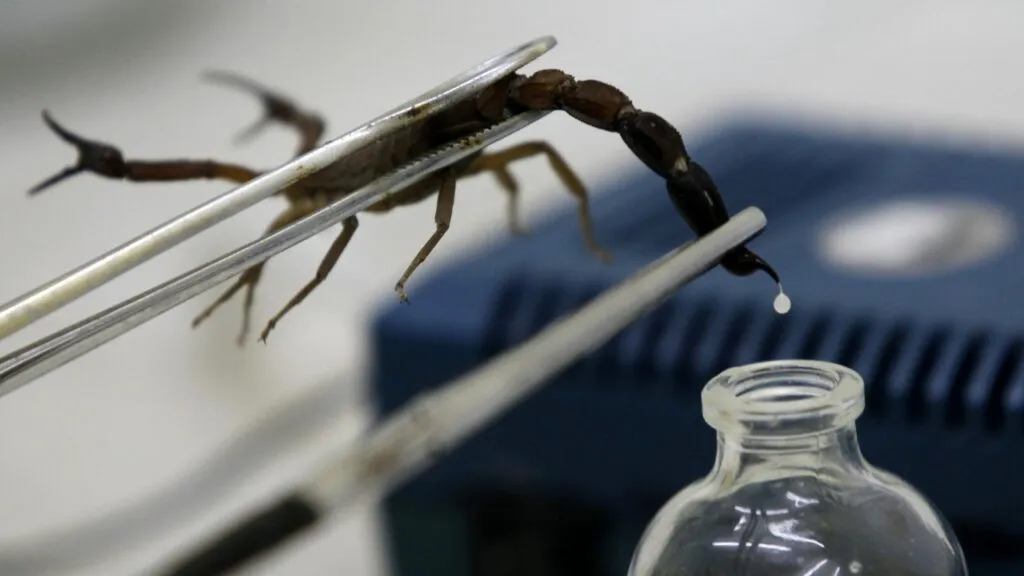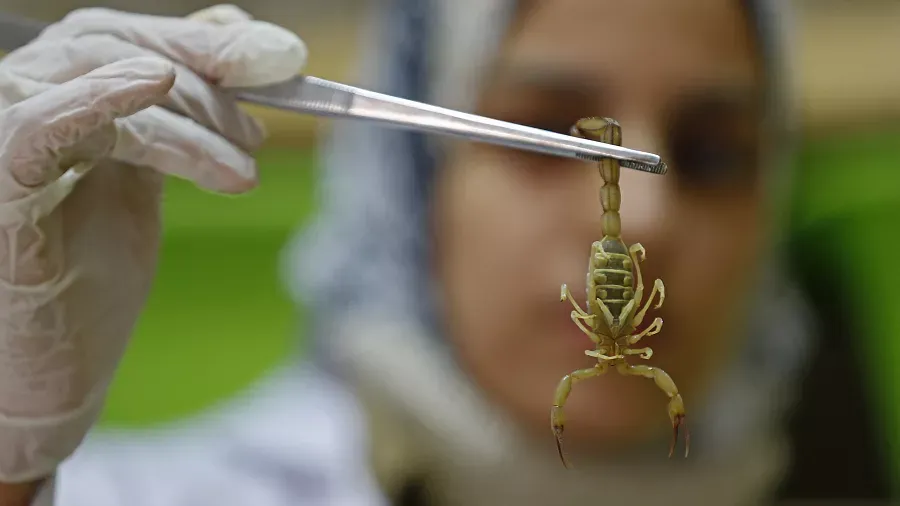Scorpion venom, often feared for its deadly potency, has emerged as a surprising treasure trove in the field of medicine, commanding an astonishing market value due to its rare and valuable components.
Among the many species of scorpions, the deathstalker stands out not just for its danger but also for the astronomical price tag attached to its venom. Priced at a staggering $39 million per gallon, this makes it the most expensive liquid in the world. Even in minuscule amounts, a droplet smaller than a grain of sugar can fetch around $130 due to its rarity and difficulty in extraction.

Extracting scorpion venom is a painstaking process, typically done manually due to the delicate nature of handling these arachnids. A single scorpion yields a mere two milligrams of venom at a time, requiring thousands of milking sessions to accumulate usable quantities. Each milking session poses risks, as scorpions can sting during the process, inflicting painful wounds akin to a severe bee sting.
Behind the lethal reputation lies a wealth of medicinal potential. Components within scorpion venom, such as chlorotoxins, scorpine, and kaliotoxin, have shown remarkable therapeutic properties in medical research. Chlorotoxins, for instance, exhibit promise in aiding the detection and treatment of brain and spinal tumors by binding to cancer cells. Scorpine has been explored for its potential in combating malaria in mosquitoes, while kaliotoxin is being studied for its role in addressing bone diseases.

The growing understanding of scorpion venom’s diverse applications fuels its increasing demand in biomedical research. As scientists uncover new therapeutic uses, from cancer diagnostics to insect-borne disease control, the market for this specialized venom expands. Researchers worldwide are intensifying efforts to explore and harness its potential, contributing to the continuous growth in demand.
Recognizing the need for efficiency and safety in venom extraction, innovators have developed remote-controlled machines capable of milking multiple scorpions simultaneously. This advancement aims to streamline the extraction process, making it faster and less hazardous compared to traditional manual methods. Such innovations promise to increase
Scientists and entrepreneurs alike are poised to capitalize on its potential, paving the way for new breakthroughs in medicine and biotechnology.
